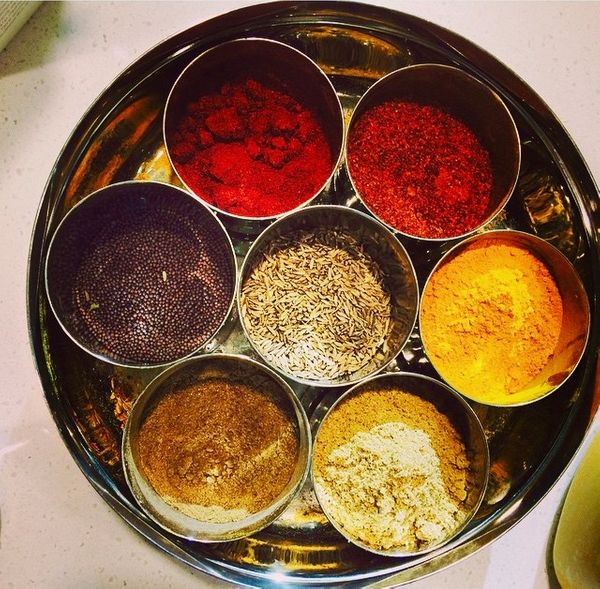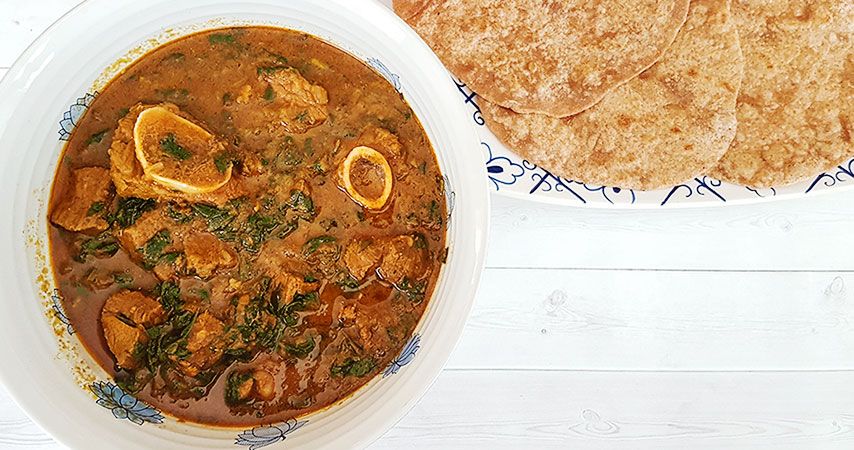Since 2015, The Happy Kitchen’s Spice it Up! Cooking classes have provided participants with a new perspective on food, presenting it not just as recipes, but as a powerful tool for health and healing. Classes have included ingredient-specific health and nutrition education, cooking instruction, and, of course, lots of delicious food!
We asked guest instructor Akshaya Chinapa Reddy from My Ayurvedic Kitchen to share her thoughts on Ayurveda, as well as cooking at home and tips for making healthy choices every day.
Q: What is Ayurveda?
Ayurveda is an ancient system of healing that originated in India. It is based around the concept of food as healing and we use spices and herbs to amplify the healing potential of different foods.
Q: How did you discover Ayurvedic cooking?
As a Yoga Teacher, I have always been interested in holistic methods of healing. As part of my 500-hr training, I took a 5-month course that explored Yoga and Ayurvedic cooking and learned some basic concepts of Ayurvedic cooking in this course. What I discovered was that so many Ayurvedic principles already existed in my cooking as I primarily cook Indian food. It was a wonderful discovery and propelled my interest in applying Ayurvedic principles to more of my cooking.
Q: What are some of the basic principles of Ayurvedic cooking?
Ayurveda categorizes people according to their Doshas (body types). We all have the three doshas of Vata, Pitta, and Kapha within us in different configurations. When we go out of balance, it is usually because one or more of the doshas are aggravated, and so we eat foods that help to reduce this aggravation and bring us back to balance. For example, in the summertime it is possible for our Pitta dosha to get aggravated producing excess heat in our bodies. This excess heat can cause rashes, anger, and irritation as symptoms of imbalance. So we consume cooling foods like lime juice, cilantro, and cucumbers to help to reduce the aggravation caused by the heat.
Q: Are there any special ingredients or preparation methods that are unique to Ayurvedic cooking?
Ayurveda stresses eating fresh seasonal foods, that are ideally eaten cooked and while still warm. Processed foods cause more aggravation in our systems and over time can possibly lead to the development of disease when consumed in excess. When we eat fresh cooked foods, they are most easily digested by our bodies, and when we are able to fully digest what we eat, we are able to maintain good health.
Q: Lots of people want to eat better and cook at home more, but they don’t think they have the time. Do you have any advice for them?
Start small and keep it simple. The first step is to slowly remove processed foods from your diet and replace those foods with fresh foods. When eating fresh home cooked meals becomes a part of your routine, then think about cooking with produce that is in season. The next step could be slowly adding spices into your meals as spices help with the digestion of food. Little by little, over time, eating healthy will become a part of your lifestyle. Of course this doesn't mean you have to give up everything you enjoy like cookies and cake, but maybe just eat those treats occasionally.
The important thing to remember is that you can't overhaul your diet in a day or a week, or three weeks. Drastically changing your diet can shock your system and making it harder to adapt to change. Even when we make changes, we go through cycles of getting on the wagon and falling off again. This is all normal and you really shouldn't beat yourself up about it. Just recognize and accept these phases. Over time when you notice how much better you feel when you eat fresh, home-cooked and spiced foods, it will become a part of your lifestyle.
Q: Do you cook all of your meals from scratch?
For the most part, yes, I do cook from scratch. Occasionally, I do use pre-made ingredients like tomato paste, coconut milk, and sometimes chicken or vegetable stock. I think it's so much better to cook from scratch because you are in control of what goes into your meals. It's very empowering!
Q: What is your favorite winter meal to make?
This winter I've been making a lot of spicy meat curries and I've made a few pots of butternut squash soup! I love cooking with spinach, carrots, green beans, and spices to ground me and warm me up from the inside out during the colder months!
Akshaya’s next class, Spice it Up!: The Healing Power of Spices on January 21st, is sold out. Look for more classes with Akshaya on our spring class schedule, to be released in February, and visit her blog for great recipes and more information on Ayurveda.


